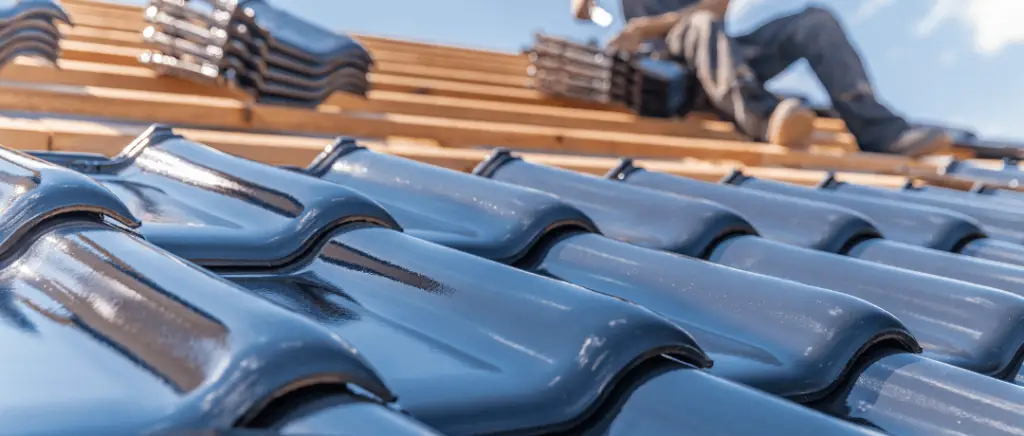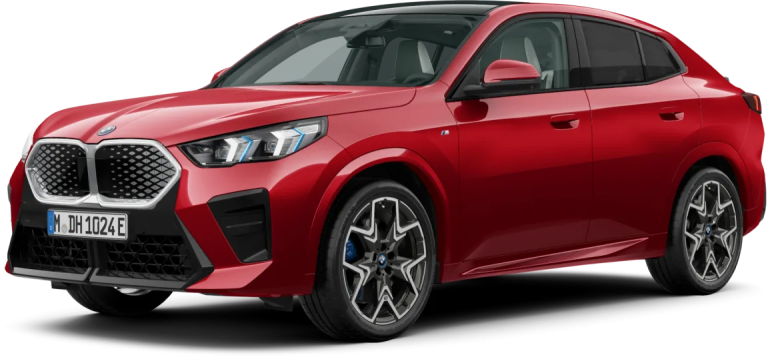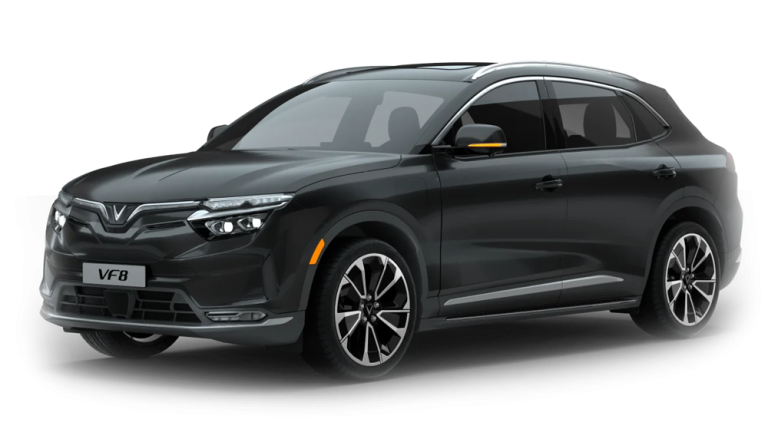You would like toto electric?
Beev offers multi-brand 100% electric vehicles at the best prices, as well as recharging solutions.
What are solar roof tiles and how do they work?
A solar roof tile, also known as a photovoltaic roof tile, is an innovative roofing element that combines the benefits of the sun's energy. functions of a conventional tile with those of a solar panel. Unlike traditional solar panels, which are installed on top of the roof, solar tiles are integrated directly into the roof structureThey offer a more aesthetic and discreet solution. In fact, they are designed to perfectly reproduce the appearance of the latter while being protected by a tempered glass top layer silicon protection.
What's more, solar roof tiles are interconnected via sealed connectors.
But that's not all: as well as fulfilling its role of providing cover for thewaterproofing your roofa solar tile:
- captures sunlight,
- and converts it into electricity thanks to photovoltaic cells.
Like solar panels, solar roof tiles generate their own green energy and renewableThis helps to reduce the building's energy consumption, thereby cutting electricity bills.
As briefly explained above, the operation of a solar tile is based on the following principles photovoltaic cellsThese cells capture the sun's light energy and convert it into electricity using the photovoltaic effect. These cells capture the sun's light energy and convert it into electricity using the photovoltaic effect.
In concrete terms, when photons from the sun strike the cells, they stimulate the electrons in the silicon, generating a electric current. This current can then be used to power electrical appliances in the home/business or stored in batteries for later use.
The different types of solar roof tiles
Solar roof tiles come in several types, each offering specific advantages to meet the diverse needs of homeowners. Among the options available, each is distinguished by its design, energy performance and level of integration into the roof.
The classic solar roof tile
The classic solar tile is the one that is the closest aesthetically to a traditional roof tile. It is available in several formats (flat, corrugated, slate) and colours to fit most roofs.
Sound similar appearance to traditional tiles allows good visual integration on your roof. It is also available in different formats and adapts more easily to complex roofs than wide solar tiles.
But that's not all: it is generally less expensive than wide solar tiles because it is smaller and less complex.
Nevertheless, their as the solar collection surface is smaller than that of wide tilesHowever, they may be slightly less energy-efficient.
What's more, the installation can be longer and more time-consuming than with wide solar tiles, which cover a larger surface area in one go.
The large solar tile
The large solar tile is distinguished by its imposing size, covering the entire surface of the roof.
She sblends in perfectly with the roof and gives a a uniform appearance for your roofOften imitating the aesthetics of traditional clay or concrete tiles. What's more, as it covers a larger roof surfacethe wide solar tile has the potential to better energy yield than a conventional solar tile of reduced size.
It should also be noted that its quicker and easier to installr than placing several small conventional solar tiles.
However, it is generally more expensive to buy than a conventional solar roof tile because of its size and its deeper integration to the building.
Because of its greater weight, it is sometimes necessary to check the strength of the roof structure before installation.
The invisible solar roof tile
The invisible solar roof tile is one of the the latest innovations in renewable energy and architectural integration.
As its name suggests, this tile is designed to blend in perfectly with the design of the roof thanks to the glass tiles used, making solar tiles virtually invisible to the naked eye.
This type of tile is particularly popular for renovation projects on historic buildings, or for new builds where aesthetics are paramount.
Nevertheless, this technology being more recent and more sophisticatedIt is generally more expensive than other types of solar roof tiles. Similarly, the conversion efficiency of solar energy may be slightly lower than conventional tiles because of the transparent film.
Already widely used in the Nordic countries, the transparent solar roofs are starting to be installed in France.
Solar slate
Solar slate is a variant of the classic solar tile, imitating the shape and appearance of traditional slate used for pitched roofs. This type of solar tile also consists of a photovoltaic panel integrated into a waterproof, weatherproof roofing material.
It is particularly popular with private customers because of its esthetic result.
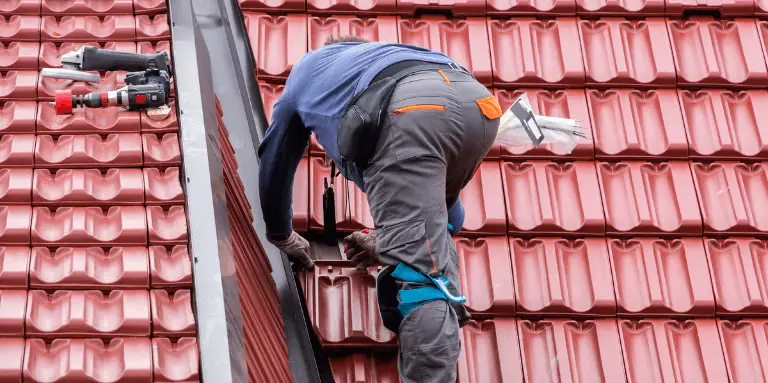
The advantages and disadvantages of photovoltaic roof tiles
Solar roof tiles represent a fascinating innovation that combines aestheticism and energy efficiency. But before you embark on this ambitious project, it's crucial to weigh up the pros and cons. These tiles, as elegant as they are, conceal considerable assets, but also challenges that should not be underestimated.
Here is a summary of the main advantages and disadvantages of this technology.
| AVANTAGES | INCONVÉNIENTS |
|---|---|
|
Aesthetics: They blend in perfectly with the roof, respecting the traditional appearance.
|
High cost: The purchase and installation price is still higher than that of conventional solar panels (solar tiles cost €900 to €2,000 per m² compared with €200 to €800 for photovoltaic panels).
|
|
Discreet installation: They replace conventional tiles, with no visible structural additions.
|
Efficiency: The yield is lower than that of conventional solar panels because of their smaller surface area and the need for a larger surface area to produce the same amount of electricity (solar tiles at 90 Wp per m² compared with 180 to 225 Wp for photovoltaic panels).
|
|
Durability: Designed to withstand the elements, they offer a long service life (between 15 and 30 years).
|
Maintenance: Replacing or repairing a faulty tile can be more complex.
|
|
Energy efficiency: They enable electricity to be generated while ensuring watertightness.
|
Can't be superimposed: Solar roof tiles are more suitable for new buildings or renovations requiring the replacement of the roof, because they can't be superimposed on an existing roof.
|
|
Property enhancement: Improve property value by incorporating modern, sustainable technology.
|
Payback time : Longer than for other solar solutions due to the high initial cost.
|
What is the yield of solar roof tiles and how can it be calculated?
The efficiency of photovoltaic solar tiles, i.e. their ability to convert solar energy into electricity, is a key criterion for assessing their effectiveness.
On average the yield of solar roof tiles is between 10 % and 15 %which is lower than that of traditional solar panelswhich can reach up to 22 %. This difference is explained by the small size and the Tile designwhich limit the active surface available to capture solar energy.
What's more, the payback period for solar roof tiles is 15 to 20 years, compared with 15 to 20 years for photovoltaic panels.
Read more : Solar panels for electric cars: everything you need to know
There are also a number of factors that influence the performance of solar roof tiles:
- wear and tear,
- the cast shadow,
- temperature,
- sunshine,
- the surface area of the roof,
- the type of solar roof tiles,
- as well as the pitch and orientation of the roof.
To calculate the yield of a solar tile, we use the following formula:
Yield (%) = Nominal power (Wp) / Surface area (m²) × Solar radiation (W/m²)
Let's take a concrete example:
- Rated power of the solar tile: 30 Wp (peak watts)
- Tile surface area: 0.5 m².
- Solar radiation: 1000 W/m² (standard value used to simulate optimum sunshine conditions)
Let's now apply these values to the formula :
Efficiency = 30 Wp / 0.5 m² × 1000 W/m² (in kWh)
Yield = 30 / 500 = 0.06
Yield = 0.06 × 100 = 6%
In short, the efficiency of the solar tile is 6 %, meaning that 6 % of the solar energy captured by the tile is converted into electricity.
💡Did you know ? By investing in batteries, such as Tesla's Powerwall, you can store the electricity generated during the day for later use.
How much do photovoltaic tiles cost?
As highlighted throughout this article, solar roof tiles represent a considerable investment. In fact, its acquisition cost is much higher than that of solar panels.
The cost of your solar array can rise rapidly depending on various parameters, such as the model chosen and the surface area to be covered.
In other words, because they are less efficient than photovoltaic panels, solar roof tiles require greater investment to achieve equivalent power output.
The average budget is 900 to €2,000/sq.m for a complete installation, i.e. 7 to 10 €/Wc compared with solar panels, whose average cost varies between €2 and €3/Wp.
At present, the photovoltaic roof tile market remains limited in terms of models and manufacturers. In France, 4 options are available:
- Solar Roof from Tesla,
- Sunstyle from Sunstyle,
- Invisible Solar by Dyaqua,
- and Edilians (formerly Imerys Toiture).
However, because of the limited choice and high prices, their adoption by households is still marginal.
Solar roof tiles or photovoltaic panels: which to choose?
Roof tiles and photovoltaic panels have similar characteristics. Your decision will therefore be based primarily on 4 fundamental criteria :
- the cost,
- aesthetics,
- performance,
- and the durability of the installation.
To help you make the right choice, we've compared these two solar options on the basis of a number of different criteria.
Criterion no. 1: Energy efficiency
As previously stated conventional photovoltaic panels are generally more efficient than solar roof tiles. They capture more sunlight thanks to their optimised design, which maximises electricity production. If your priority is energy efficiency, photovoltaic panels are the best option.
Criterion no. 2: Aesthetics
Aesthetics are a decisive factor for many homeowners. Solar roof tiles, which are integrated directly into the roof, offer an aesthetically pleasing solution. a discreet and elegant solutionThey are ideal for buildings where the integration of panels could detract from the overall appearance. They are ideal for buildings where the integration of panels could detract from the overall aesthetic, or for listed buildings.
Solar roof tiles are an interesting option.
Criterion 3: Cost
As previously stated, the the price of solar roof tiles is significantly higher than that of photovoltaic panels. What's more, the the payback period for solar roof tiles is longerThis makes them less attractive from a financial point of view. If budget is a major consideration, photovoltaic panels offer better value for money.
Criterion no. 4: Durability and installation
Solar roof tiles are designed to withstand the elements while incorporating photovoltaic cells. However, their installation is more complex and costly. Photovoltaic panels, on the other hand, are easier to install and maintain, which may also influence your decision.
Worth noting : It is important to specify that the use of a RGE-certified installer (Reconnu Garant de l'Environnement) guarantees optimum expertise for the installation of your solar panels. In fact, a incorrect installation can compromise ideal sunlight exposurereducing electricity production.
What's more, choosing an RGE-certified installer entitles you to state aid for installing solar panels at home.
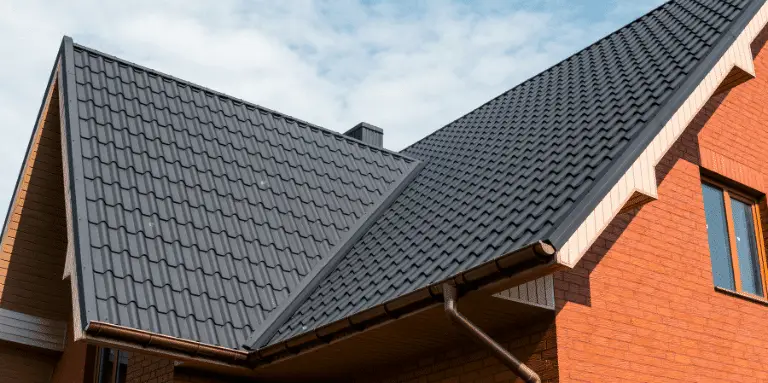
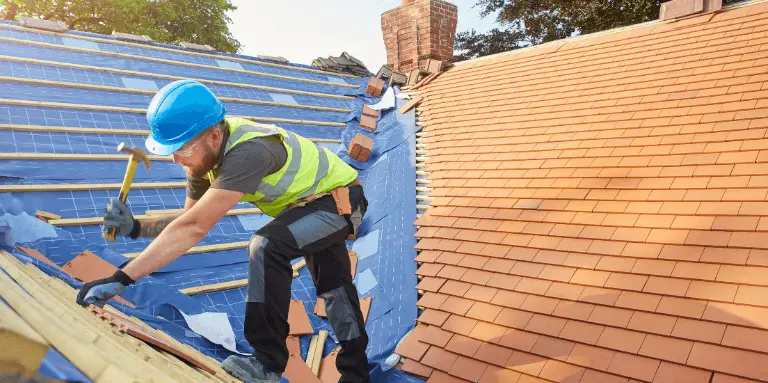
Support available for installing solar roof tiles
Opting for solar roof tiles not only means making a aesthetic and ecological choicebut it also means benefiting from a wide range of financial assistance to reduce the initial investment.
In France, various incentives have been introduced to encourage private individuals to adopt this innovative technology. We'll take a look at how these financial opportunities can help you make your solar project a reality.
The self-consumption bonus
The self-consumption bonus is a financial support granted when you opt for :
- the total sale,
- total self-consumption,
- or self-consumption and sale of the surplus.
As a result, all solar installations whose power is equal to or less than 100 kWp are eligible for this premium.
Le the amount of this premium is determined by the date of the connection request (DCR) of your installation and is recalculated each quarter by CRE (Commission de Régulation de l'énergie).
It decreases progressively according to the installed capacity and certain specific levels, namely :
- for an installation ≤ 3 kWp = 260 €/kWp
- for an installation ≤ 9 kWp = €190/kWp
- for an installation ≤ 36 kWp = 190 €/kWp
- for an installation ≤ 100 kWp = 100 €/kWp
(Rates applicable from 1ᵉʳ August to 31 October 2024).
The landscape integration bonus
Introduced by the government in 2021, the landscape integration premium, or Ptuileis financial support for certain photovoltaic installations. The installations of 500 kWp or less are eligible.
This aid is not means-tested, provided that a number of conditions are met:
- L'roof pitch must be between 10° and 75°.,
- L'installation must be carried out by a RGE-certified professional,
- At least 80 % of roof surface must be covered by thesolar installation,
- The solar roof tiles must be installed on a roof (building, house or shed),
- Solar equipment must guaranteeroof waterproofing by overlap or interlocking,
- A certificate of conformity must be issued by the Centre scientifique et technique du bâtiment (CSTB) after the works,
- The amount of this landscape bonus depends on the date of the connection request and the output of the solar installation.
The amount of this premium varies according to 2 factors: the date of the connection request and the output of the solar array.
The current rates for connection requests submitted before 8 october 2023 are as follows:
- installed capacity ≤ 100 kWp = 0.133 €/Wc
- installed capacity > 100 and ≤ 250 kWp = 0.128 €/Wc
- installed capacity > 250 and ≤ 500 kWp = 0.125 €/Wc
Having said that, here are the photovoltaic processes eligible for the landscape integration premium:
| N° AVIS TECHNIQUE | PRODUIT | FABRICANT | ÉCHÉANCE DE VALIDITÉ |
|---|---|---|---|
|
21/21-77_V1
|
Sunstyle Steel
|
SunStyle
|
31/12/2024
|
|
21/15-50_V2
|
PV roof tiles and slates
|
Edilians
|
31/03/2025
|
|
21/22-78_V1
|
Solardoise
|
VMH Energies
|
30/06/2025
|
|
21/16-61_V2
|
Integrated V-SYS
|
Systovi
|
28/02/2026
|
Reduced-rate VAT
The reduced rate of VAT applies exclusively to projects involving the installation of solar roof tiles whose power does not exceed 3 kWp. In this case, you will benefit from VAT at 10% on your solar roof tiles, in which case VAT of 20% will be applied.
The zero-rate eco-loan (éco-PTZ)
The eco-PTZ, or zero-rate eco-loan, is a scheme introduced by the government to help private individuals finance energy renovation work on their homes. As its name suggests, this zero-interest loan allows you to repay the sum borrowed without having to pay interest.
You will be able toborrow up to €50,000All energy renovation work combined.
Advantageous feed-in tariffs for green energy
The electricity generated by solar power can be consumed in its entirety, or partially self-consumed with the sale of surplus, or even sold in its entirety. In these 2 cases, you can choose between :
- La resale via EDF OA's Obligation d'Achat scheme (Obligation d'Achat) or ELD (Local Distribution Companies), with a tariff guaranteed for 20 years,
- Resale to an alternative supplier, who can :
- or take over your Obligation d'Achat contract,
- or offer you another feed-in tariff, generally lower than that of EDF OA and the ELDs.
The sale of your solar-generated electricity is governed by a purchase contract, the final amount of which is determined on the basis of the tariff quarter applicable at the time the connection request is completed.
What's more, the amount is set in stages according to the power of your installation.
Here are the EDF OA feed-in tariffs from 1ᵉʳ August to 31 October 2024:
- Installation ≤ 3 kWp
- 0.1276 €/kWh (sale of surplus)
- 0.1205 €/kWh (total sale)
- Installation > 3 and ≤ 9 kWp
- 0.1276 €/kWh (sale of surplus)
- 0.1024 €/kWh (total sale)
- Installation > 9 and ≤ 36 kWp
- 0.0765 €/kWh (sale of surplus)
- 0.1318 €/kWh
- Installation > 36 and ≤ 100 kWp
- 0.0765 €/kWh (sale of surplus)
- 0.1146 €/kWh (total sale)
💡Did you know ? Income from the sale of your electricity is not subject to tax for installations with a capacity of less than 3 kWp.
Conclusion
In conclusion, solar roof tiles represent a significant advance in the field of renewable energy, combining aesthetics and functionality.
Their integration into construction projects not only produces green energy, but also optimises the energy efficiency of buildings. By choosing solar roof tiles, you are investing in a sustainable, innovative technology that is perfectly suited to modern requirements. Nonetheless,
You now have all the information you need to make your choice and launch your solar project!
Why not install photovoltaic solar panels?
With Beev, get a turnkey solar panel solution to reduce your electricity consumption.
